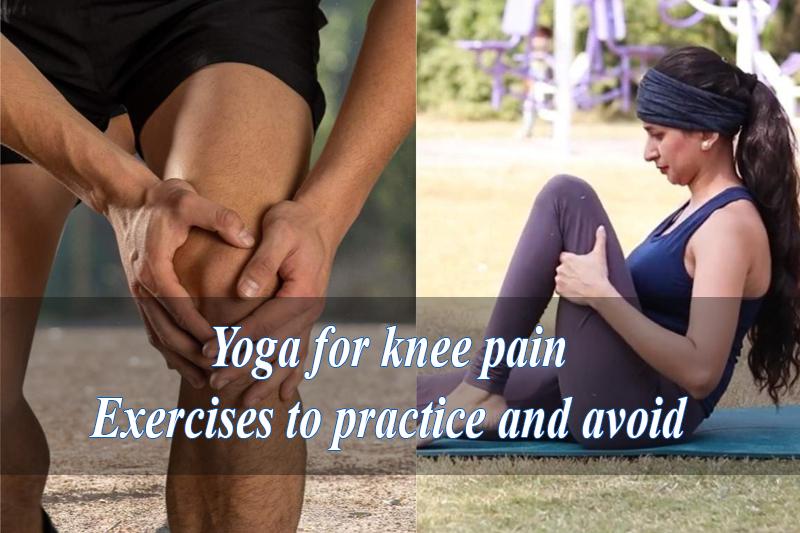The headstand pose yoga, also known as the upside-down pose, is one of my all-time favorites.
This upside-down brings a lot of physical and mental benefits to the practitioner. However, not everyone understands this pose and practices it correctly and safely. The following article Bellyfatzone will introduce you to the benefits and how to practice the correct headstand posture in Yoga!
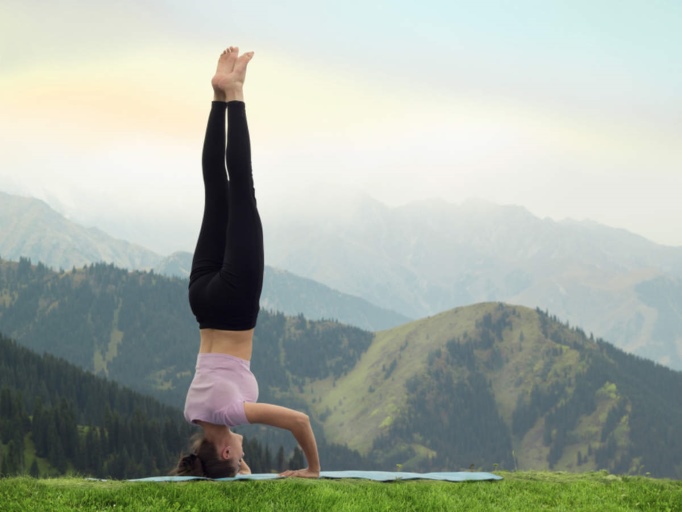
What does the headstand pose do?
A headstand is a way to reverse the usual standing position; instead of landing with your feet, you will land with your hands. There are two basic types of headstands: wall-backed and non-wall-backed. In particular, the movement without leaning against the wall is the most difficult, so most people often practice only leaning against the wall.
Headstand is a very healthy movement; regular practice for just a few minutes a day will help you get the following benefits.
Strengthens body connection
The body acts like a chain vertically from head to toe and very little in reverse. Therefore, practicing a headstand will help reverse the circulatory system and also increase your balance, so you can move and practice better, especially in sports that require quick reflexes, like kicking a soccer ball or badminton.
Reduce spine pain
Every day our spine is under a lot of pressure to maintain the body and perform normal activities. The forces acting on the spine often make them tired and painful. Headstands will help you effectively relieve spinal pain by inverting the body to reduce spinal pressure.
Relieve stress and anxiety
Turning your head down will help balance the central nervous system, reducing the amount of Cortisol that can be a cause of stress and anxiety, helping the body to be more relaxed.
This yoga pose promotes increased and reversed blood flow, energizes the mind, helps build confidence, and increases the ability to focus and pay more attention to the body and mind so that you don't fall while performing this action. This posture is perfect for working in environments requiring high concentration.
Hormone balance
The headstand exercise is relatively tricky; it is the opposite of the daily active body posture. But applying this pose is good for balancing hormone production. This movement will help the hormones of the pituitary gland, thyroid gland, adrenal gland, or many other glands to produce and balance the hormone just enough to keep the body healthy and help balance the practitioner's mood.
Improve blood circulation
When your legs are elevated above the heart, blood begins to circulate faster in the opposite direction, helping us to have good health. Simply when the leg is raised, it relaxes after a day of supporting your whole body, similar to standing on the shoulder.
Essentially, this boosts energy by bringing new oxygen to the brain faster, activating new neurons to be produced in the brain and stimulating tissue regeneration in all body areas.
View more: Breathing in yoga: Important things to note to be effective
Strengthen shoulder
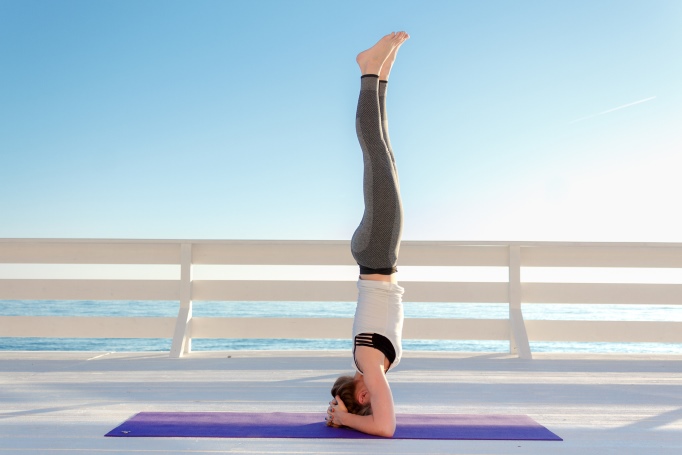
When doing the headstand pose, you must focus on the shoulders and hands to balance the whole body. You must warm up your shoulders thoroughly before entering the workout to avoid injury and work from the basic to the advanced. As you get used to the intensity of the exercise, your shoulders are also much more muscular.
Increase confidence and courage
Not only has an impact on health, but a headstand also helps you regulate your breathing, have a more peaceful mind and reduce all stress and anxiety in life. Even better, performing the headstand pose will help you have more courage and strength to overcome all difficulties and obstacles because if you are afraid, you will not be able to perform this movement.
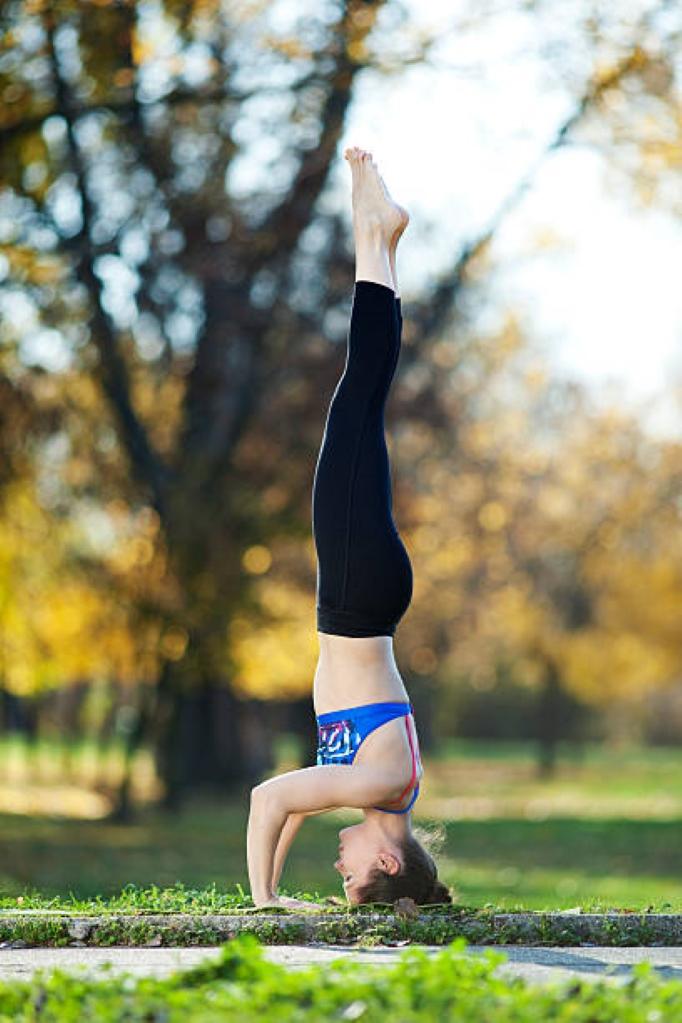
Bring spiritual value
A headstand is a yoga pose that carries energy flow through the body. In spirituality, the upside-down movement is considered a way of moving energy from throughout the body's seven chakras, helping you become more aware of life and enriching your spiritual life.
Deeply understanding and doing the proper headstand exercise gives you a close connection with yourself and all living things on the planet and the boundless energies of the universe. At first, when hearing these things, most people feel confused, but when practicing correctly, it is a straightforward thing.
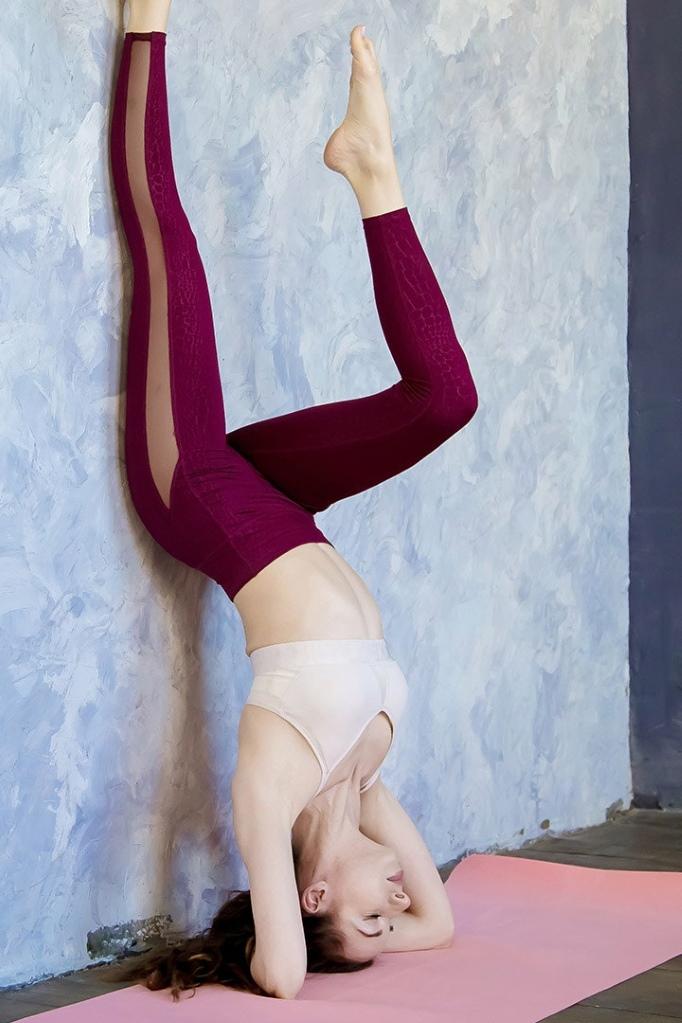
View more: How Many Times Should I Practice Yoga a Week?
Instructions to practice the correct headstand posture
Warm up well before training
Please warm up carefully before exercise to ensure safety exercise
Step 1: Start with cardio
Cardio is the way to call exercises that increase the heart rate to help the cardiovascular system stay healthy and provide more oxygen to the cells, such as jogging or jumping rope for about 10 minutes. Warming up helps warm the body before exercise to help warm the muscles, not cold or stiff, thereby reducing the risk of injury.
Step 2: Stretch the wrist
- Hands straight up. Use one hand to bend the other hand towards the body.
- Do the same with the other side (as shown). Do this a few times with each hand.
Step 3: Pull the arm muscles
- Hands raised in front of eyes, hands clasped together.
- Pull your hand to the right, return to the center position, and then pull it to the left again.
- Do this a few times.
Step 4: Pull the shoulder part
- Place your feet hip-width apart.
- Hands clasped behind each other, fingers interlaced.
- Press your hands into the floor while bringing your chin and chest up.
View more: Does yoga help sexually? Yoga Poses To Increase Sexuality For Men And Women
How to do the headstand pose

One of the ways that many newbies are instructed is to use a wall for protection to avoid kicking or falling on something.
- Bend down so that your hands are on the floor so that the distance between your hands is shoulder-width apart.
- Spread your weight evenly on both hands and let your hands face each other.
- Bring your body weight to your hips and gradually shift your weight into your hands to lift your legs off the floor.
- The spine is now kept straight, absolutely do not rotate the back. Shoulder and arm muscles stretch.
- Inhale and slowly lower your head to the floor while your body weight is still in your arms, your spine still straight. Let your head lightly touch the floor to balance your body; use your shoulders, hands, and neck if you can't do it.
- Hold the pose for a few seconds, then exhale, put your body weight in your hands, and then push your body back to the starting position to end the pose.
- Do this movement very slowly; do not use momentum to push back, as it will cause serious injuries such as shoulder pain and broken vertebrae.
- Note, for the uninitiated, lean against the wall when practicing to increase your balance.

View more: Yoga Poses For The Heart – You Should Practice Every Day To Be Most Effective
Experience headstand in yoga
How long do you practice headstands?
You can practice growing headstands every day. Hold each time for tens of seconds or as long as possible. You can do a headstand with your feet against the wall at first, then gradually switch to not leaning against the wall to increase the level of exercise.
Who should not headstand?
Although the headstand pose brings a lot of health and mental benefits to the practitioner, not everyone is suitable to practice this exercise.
If you belong to one of the following categories, you should not practice a headstand.
- Beginners: Newcomers to this subject have average endurance, not sure how to breathe and balance, so it is easy to fail. Trying to practice a headstand when unsure about the training technique will cause the body to suffer unwanted injuries.
- People with weak health: It is also unsuitable to practice a headstand because if you are not healthy, it is difficult to lift and keep in an upside-down position for a specific time. Especially this position is not suitable for people with high blood pressure, those who have just woken up, or those who have just had surgery.
- Women in the particular period: This upside-down position is also not suitable for pregnant or menstruating women because women in this period are weak in health and have poor concentration and balance ability.
- In addition, you should not perform this exercise if you suffer from neck and shoulder injuries, headaches, asthma, or nasal congestion.
Common mistakes when practicing
Most people new to yoga growing headstands will make the following basic mistakes. You can refer to self-correction when practicing:
- Elbows are set too wide or too narrow.
- Do not keep the spine straight.
- Perform the movement directly on the floor instead of using an exercise mat.
- Uncontrollable movements lead to easy kicks to the head.
- Less use of the shoulder and arm force to bear part of the body weight. If you can't distribute the weight evenly, try placing a towel under your arm for stability.
- Move too fast, and make hasty steps. Practice slowly, focusing on your breathing and listening to your body.
The above article has introduced you to understand more about the benefits and how to practice the correct headstand posture to achieve the best effect and avoid injuries when practicing.
Bellyfatzone wishes you safe and effective workouts. Thank you for your interest in following the article!
View more: Yoga slim waist: Exercises many people have done with results





